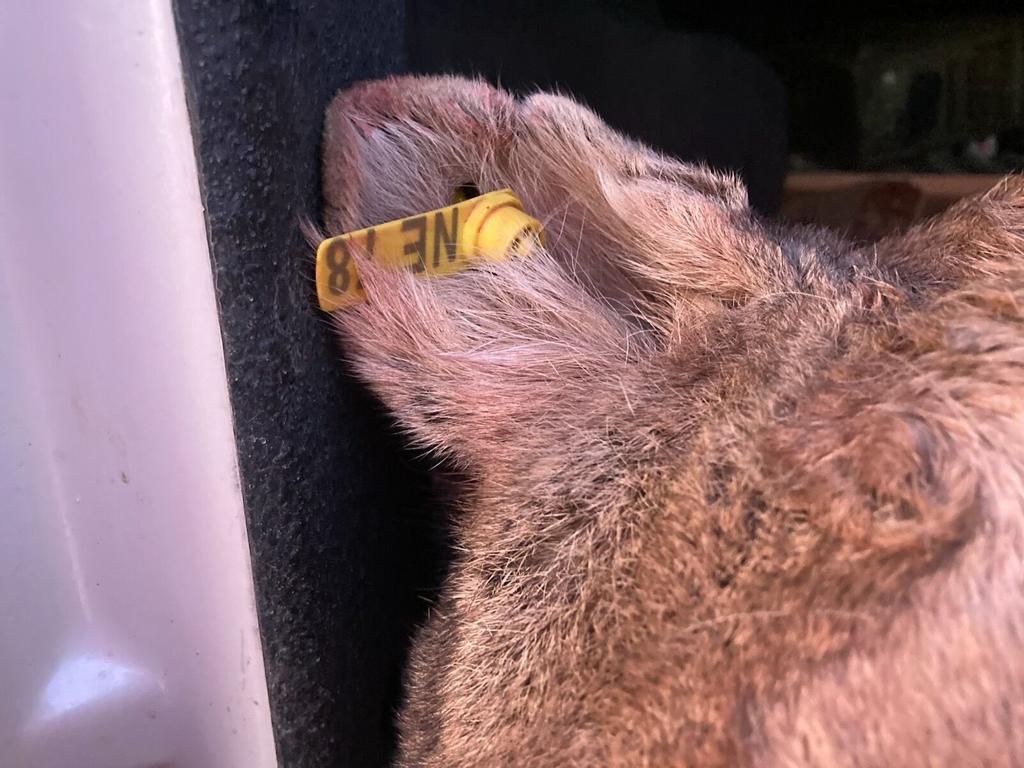
The female mountain lion was wearing a radio collar, and her behavior in northwest Nebraska in 2018 was telling a story.
State biologists tracking her movements — and watching her repeatedly returning to the same area — could tell she was building a den, that she was expecting.
And that August, in the Pine Ridge area near Chadron, they found her two kittens. They collected DNA samples and — because the animals were too small to be collared — they attached yellow ear tags.
The kitten wearing tag NE 78 grew up and, like most young males, set off, searching for a mate and his own territory.
Mountain lions leaving northwest Nebraska and the Niobrara River Valley often make the news when they head south and east, and are tracked in Norfolk, hit by cars near Fullerton and Arlington, or captured by trail cams and shot by poachers on the edges of Lincoln — all of which happened in the past six months.
But not all of them go south and east.
“They can go in any direction,” said Sam Wilson, furbearer and carnivore manager for the Nebraska Game and Parks Commission. “They all don’t go in the same direction.”
Barbed-wire fences don’t stop Nebraska cats from crossing the borders into South Dakota and Wyoming, and lions from those states visit Nebraska, Wilson said.
“It’s likely always been the case that males born in Nebraska travel hundreds of miles and that might take them out of state. We get lots of back and forth.”
NE 78 headed north at some point, and he kept going. He crossed Interstate 90 and put the Black Hills behind him. He walked more than 250 miles, ending up near Ekalaka, Montana, in that state’s southeast corner.
Wilson knows this because his office was contacted last month by a biologist at the Montana Department of Fish, Wildlife and Parks. NE 78 had been killed during Montana’s hunting season, and officials there could tell by its ear tag that it was a Nebraska native.
That was a first for Nebraska — its mountain lions have been killed in neighboring states, but never in one more than a state away, Wilson said.
Still, its life and death don’t add much to what his office knows about mountain lions. Without a radio collar, it has no idea how the 3-year-old ended up near Ekalaka, no path of its travels.
“We have one piece of data, where the kitten was tagged, and they have one piece of data, where it was harvested. And that’s the only thing we can learn from it.”
It was also a first for Montana. Officials there have long suspected lions from other states — particularly the nearby Dakotas — have moved into the area. But the tagged lion confirmed that, said Emily Mitchell, a Montana wildlife biologist.
And that’s important, she said, because it maintains biodiversity in the population.
“It’s good to see that lions are coming in.”
Reach the writer at 402-473-7254 or psalter@journalstar.com.



